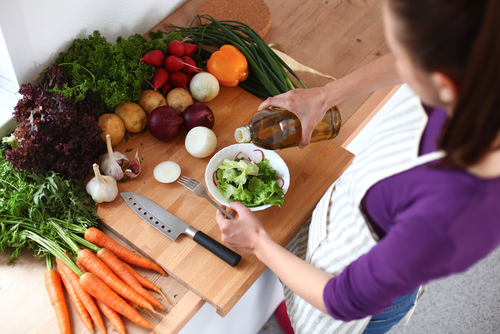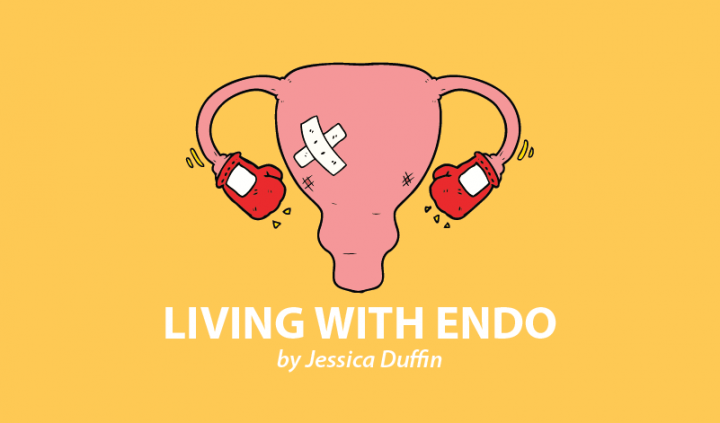People sometimes roll their eyes when I talk about the link between endometriosis and endocrine disruptors. But the mounting evidence is hard to ignore. Last year, Endometriosis News reported on one of the latest studies about endocrine disruptors and their negative effects on reproductive health.
Endocrine disruptors are natural or man-made chemicals that disrupt our hormones. These chemicals are linked to reproductive issues such as fibroids and endometriosis, male reproductive dysfunctions, cancer, and cognitive conditions such as autism.
When starting this journey, I was overwhelmed and thought I had to change everything at once. It was almost paralyzing and I spent a lot of money trying different products out. It was also hard to keep track of all the chemicals to avoid.
Some notable chemicals responsible for endometriosis issues are:
- Dichlorodiphenyltrichloroethane (DDT), which is, thankfully, now banned in most countries, including the United States.
- Dichlorodiphenyldichloroethylene (DDE), a pesticide and a by-product of DDT.
- Dioxins, which are found in many foods and products.
- Phthalates, which are found in household products, beauty products, personal care products, etc.
Many chemicals mimic estrogen, which encourages endometriosis growth. Women with endometriosis often have estrogen dominance, so reducing our exposure to chemicals could help manage endometriosis.
It can be overwhelming to keep on top of this and look out for all of the chemicals. Here are my recommended tips to start weeding these chemicals from your life:
Start with your kitchen
Non-stick pans are laden with chemicals and are a possible contributor to conditions and diseases. Cooking equipment can be expensive, so exchange your most-used pans for non-toxic versions. Cast-iron, stainless steel, and ceramic cookware are great options.
Minimize plastics
In the beginning, I tried to shop only from farmers markets and vegetable delivery companies. It was expensive and time-consuming because I always had to cook from scratch. If you have the time and money for that, awesome! If not, my suggestion would be to minimize where you can and adapt how you use plastics.
If you buy pre-prepped meals, take them out of their plastic packaging and heat them in a container that’s safer, such as a glass or ceramic bowl. If you use a microwave, you can easily transfer your dish into a microwavable dish and cover it with a plate.
If you buy fruit and vegetables from a supermarket and they’re in plastic, just remove the plastics and store them in glass containers in the fridge.
Tupperware sold before March 2010 contains BPA and other chemicals. There are now lots of different container brands to try. Be sure to check what they’re made of. Glass, stainless steel, silicone, and ceramic are good choices. Wellness Mama has a great low-down on some of the best options out there.
Finally, change your water bottle. I drink lots and lots, but I originally always used plastic bottles despite wanting to change that for years. I finally made the jump and am so happy I have. Now I have a S’well bottle. They’re a bit of an investment, but it evens out, considering I bought a new plastic bottle every few days. Plenty of gorgeous, non-toxic bottles are online. You can usually also find them in places like Whole Foods Market and Planet Organic.
Change your household cleaners
This one is pretty simple. Giving that chemical cleaners are literally chemicals, changing them will make a big difference. This change is a good one to start with first. Loads of options exist, and many are more stylish than your average supermarket spray! In the United Kingdom, I love Kinn. In both the U.K. and the U.S., you can get your hands on Method.
Go natural
This is a much bigger area. I would first change your period products — who wants dioxins near their uterus? Especially with endo! There are tons of amazing non-toxic sanitary brands, including Time of the Month, Cora, and Lola.
Secondly, change your body care. I’m saying body care instead of makeup, as it’s cheaper to change and your skin is such a large organ. Coconut oil is an affordable body lotion, but I always have to wipe myself down with a towel to get rid of the excess!
You can change makeup brands too, but keep in mind that it’s costly, so it’s probably best to do it bit by bit.
Start small
Try not to get overwhelmed by the task. Any change is an improvement!
***
Note: Endometriosis News is strictly a news and information website about the disease. It does not provide medical advice, diagnosis, or treatment. This content is not intended to be a substitute for professional medical advice, diagnosis, or treatment. Always seek the advice of your physician or other qualified health provider with any questions you may have regarding a medical condition. Never disregard professional medical advice or delay in seeking it because of something you have read on this website. The opinions expressed in this column are not those of Endometriosis News or its parent company, BioNews Services, and are intended to spark discussion about issues pertaining to endometriosis.


